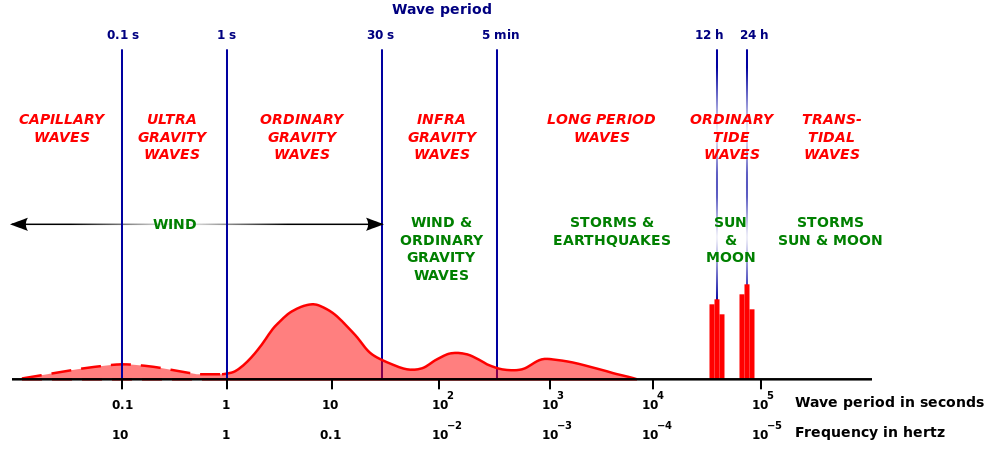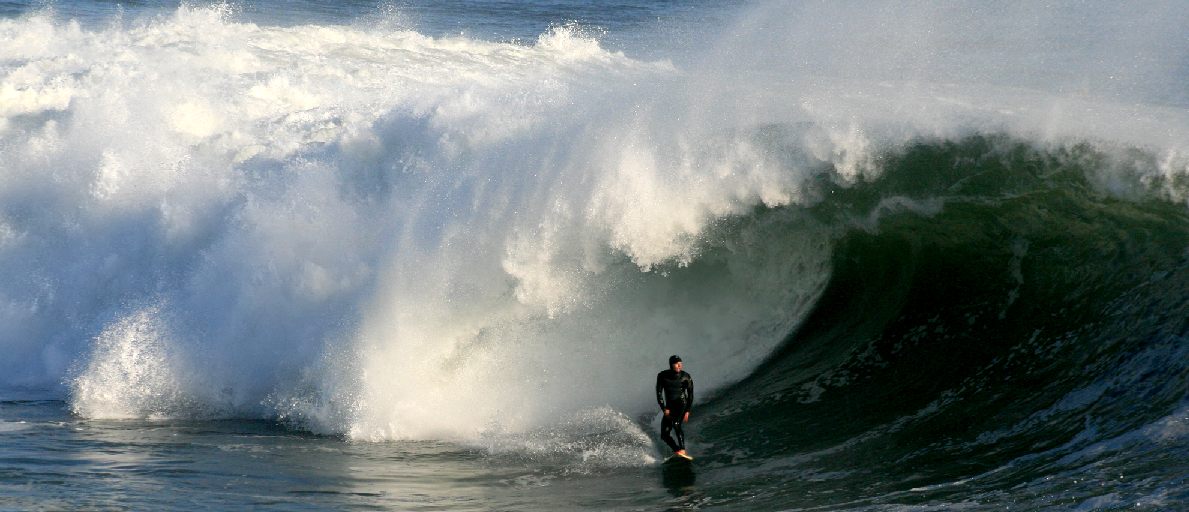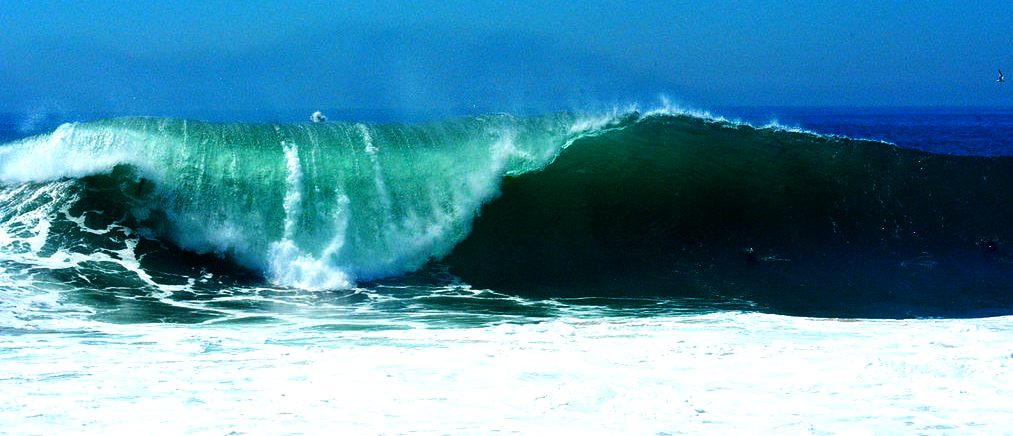|
SEAVAX - WAVE MAKING MACHINE
BRICKS & MORTAR - CARRIAGE - DRAINAGE - FACILITIES - FILTRATION - GLASS & PAINT - GANTRY - GIMBALS - HATCHES - HYDRODYNAMICS HISTORY - INSTRUMENTS - LABORATORY - LAMINATING - LOGISTICS - OUR TEST TANK - PROOFING - REVIEWS - SCREEDING - SEAVAX TEST VIDEOS - SLUICE GATE - SOLAR BATTERIES - WAVE MAKING - WIND MACHINE
|
|||||||||||||||||||||||||||||||||||||||||||||||||||||||||||||||||||||
|
As part of our SeaVax testing program we will be creating artificially high seas and force 10 hurricane conditions in our water testing tank. Waves may be created quite simply using any device to generate a surge. A wave tank is a laboratory setup for observing the behavior of surface waves. The typical wave tank is a box filled with liquid, usually water, leaving open or air-filled space on top. At one end of the tank an actuator generates waves; the other end usually has a wave-absorbing surface. A similar device is the ripple tank, which is flat and shallow and used for observing patterns of surface waves from above.
One of the reasons for building our own facility is the significant costs of hiring academic facilities. Another reason is convenience, but the main reason is the ability to tailor our experiments to ocean cleaning and plastic recovery - and the special considerations for a ship powered by energy from nature.
AUTONAUT - This fabulous little boat is driven by waves, here shown being tested in QinetiQ's water basin in modest waves, one of the largest and most expensive testing facilities in Europe.
ECONOMICS
The Berkeley Wave Tank (circa 1930's), which is basically a long narrow tank designed for pull testing of ship hulls costs about $1500/day to hire. A more modern wave tank costs around $10,000/day. As we will be conducting tests on our robot vessel routinely we could be looking at $300,000 dollars for 30 days of testing in 2016 - if we were to go the hire route. Our DIY tank is costing a little more than at first estimated, but not by much in the grand scheme of things.
The question many will be asking is: "can we build our own wave tank economically and still get useful results?" Our consultant engineer explained to us that science is about observation and observation absorbs time. Measurement is important, but humans are particularly good at noticing unusual phenomena and effects, learning from experimenting (playing) and then applying such discoveries. If time costs $10k a day, observation goes out the window, because it would simply cost too much to waste on observation.
We are crowd funded and this project is not-for-profit, so we have not included a lot of the skilled labour it is taking to build our tank, with a present estimate of cost being: £9,782 ($13,000). See our development timetable for details.
GENERATING A WAVE
A sophisticated wave generator is capable of producing just about any wave form imaginable. For a low cost wave tank, being able to generate sinusoidal waves with a known period and amplitude is
sufficient for our purposes. Our wave generator is basically a paddle attached to the bottom of the
sluice gate frame on a hinge. A motor attached to a crank can be used to generate waves. The larger the crank radius, the higher the wave amplitude. The wave period
will depend upon motor speed.
WAVE TABLE - The speed of all ocean waves is controlled by gravity, wavelength, and water depth. Most characteristics of ocean waves depend on the relationship between their wavelength and water depth. Wavelength determines the size of the orbits of water molecules within a wave, but water depth determines the shape of the orbits. The paths of water molecules in a wind wave are circular only when the wave is traveling in deep water. A wave cannot "feel" the bottom when it moves through water deeper than half its wavelength because too little wave energy is contained in the small circles below that depth. Waves moving through water deeper than half their wavelength are known as deep-water waves. On the other hand, the orbits of water molecules in waves moving through shallow water are flattened by the proximity of the sea surface bottom. Waves in water shallower than 1/20 their original wavelength are known as shallow-water waves. Transitional waves travel through water deeper than 1/20 their original wavelength but shallower than half their original wavelength. In general, the longer the wavelength, the faster the wave energy will move through the water.
WIND WAVES
In fluid dynamics, wind waves, or wind-generated waves, are surface waves that occur on the free surface of oceans, seas, lakes, rivers, and canals or even on small puddles and ponds. They result from the wind blowing over an area of fluid surface. Waves in the oceans can travel thousands of miles before reaching land. Wind waves range in size from small ripples, to waves over 100 ft (30 m) high.
WAVE TABLE - Conditions Necessary for a Fully Developed Sea at Given Wind Speeds, and the Parameters of the Resulting Waves. (NOTE: Most of the wave speeds calculated from the wave length divided by the period are proportional to sqrt (length). Thus, except for the shortest wave length, the waves follow deep water theory. The 28 ft long wave must be either in shallow water or between deep and shallow.)
TYPES OF WAVE
Three different types of wind waves develop over time:
Individual "rogue waves" (also called "freak waves", "monster waves", "killer waves", and "king waves") much higher than the other waves in the sea state can occur. In the case of the Draupner wave, its 25 m (82 ft) height was 2.2 times the significant wave height. Such waves are distinct from tides, caused by the Moon and Sun's gravitational pull, tsunamis that are caused by underwater earthquakes or landslides, and waves generated by underwater explosions or the fall of meteorites—all having far longer wavelengths than wind waves.
WAVE RIDER - Large waves are generally hazardous to shipping, but great fun in the right circumstances for experienced surfers.
Yet, the largest ever recorded wind waves are common — not rogue — waves in extreme sea states. For example: 29.1 m (95 ft) high waves have been recorded on the RRS Discovery in a sea with 18.5 m (61 ft) significant wave height, so the highest wave is only 1.6 times the significant wave height. The biggest recorded by a buoy (as of 2011) was 32.3 m (106 ft) high during the 2007 typhoon Krosa near Taiwan.
DESCRIPTION - The red circles are the present positions of mass-less particles, moving with the flow velocity. The light-blue line gives the path of these particles, and the light-blue circles the particle position after each wave period. The white dots are fluid particles, also followed in time. In the case shown here, the mean Eulerian horizontal velocity below the wave trough is zero. Observe that the wave period, experienced by a fluid particle near the free surface, is different from the wave period at a fixed horizontal position (as indicated by the light-blue circles). This is due to the Doppler shift.
WAVE FLUMES
In fluid dynamics, a wave flume (or wave channel) is a laboratory facility for the physical modelling of water waves, in order to study their properties and their effects on coastal structures, offshore structures, sediment transport and other transport phenomena.
RECIRCULATING WAVE - Without re-modeling the steps that were in the lower left hand corner of this diagram, we would not have been able to install the turning vanes to be able to use the tank in recirculating mode. In this mode we can measure the drag of a hull, or any other object, even those submerged, such as a submarine - and for a fraction of the cost of other facilities.
LINKS & REFERENCE
https://en.wikipedia.org/wiki/Wind_wave https://avaaz.org/
BRICKS & MORTAR - FILTRATION - GLASS & PAINT - GANTRY - HYDRODYNAMICS HISTORY - INSTRUMENTS - OUR TEST TANK - SEAVAX TEST VIDEOS - SLUICE GATE - WAVE MAKING - WIND MACHINE
|
|||||||||||||||||||||||||||||||||||||||||||||||||||||||||||||||||||||
|
This page is Copyright © 2018 Bluebird Marine Systems Ltd. The names Bluebird™, Bluefish™, Miss Ocean™, RiverVax™, SeaNet, SeaVax™, and the blue bird & fish in flight logos are trademarks. All other trademarks are hereby acknowledged.
|
|||||||||||||||||||||||||||||||||||||||||||||||||||||||||||||||||||||






